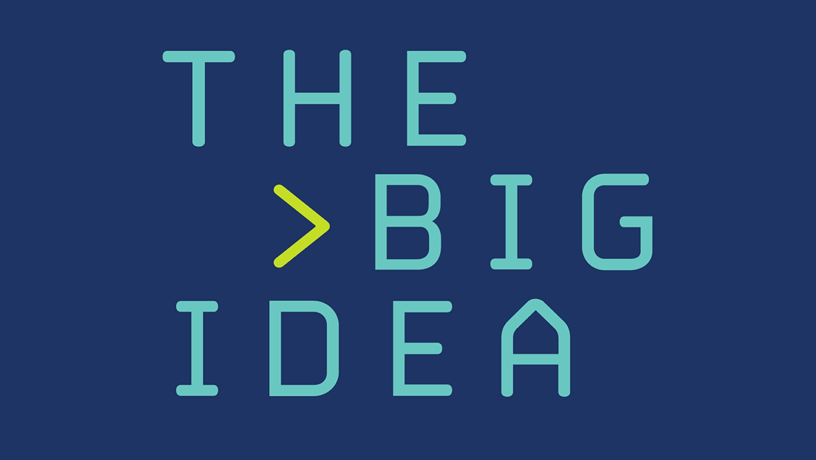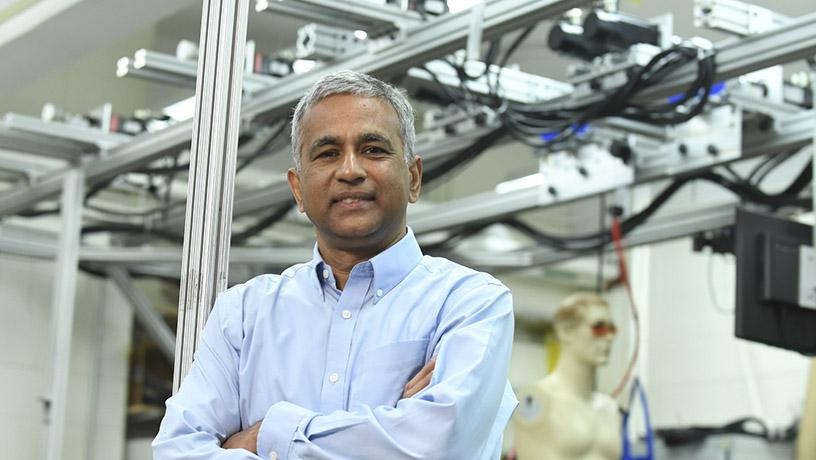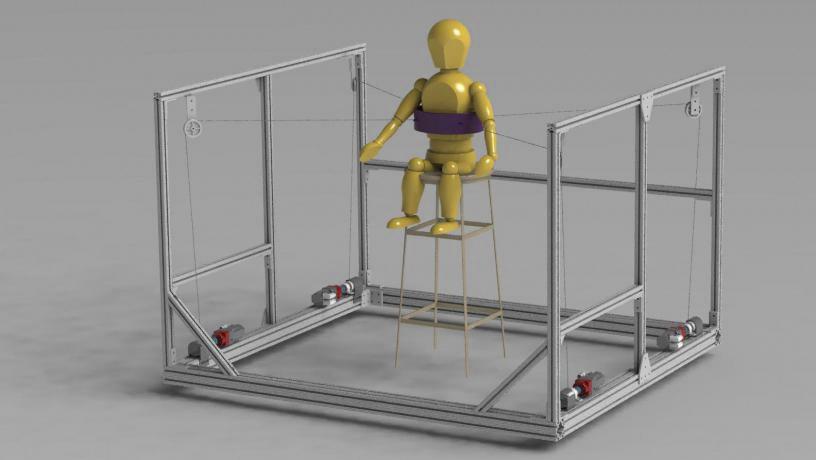Your Next Physical Therapist Could be a Robot
Mechanical Engineering Professor Sunil Agrawal gets people back on their feet

A series of conversations on pioneering research.

Prof. Sunil Agrawal.

Illustration showing the architecture of TruST, a robotic device invented by Columbia engineers that retrains patients with spinal cord injury to sit more stably and gain an expanded active sitting workspace.
In the popular imagination, robots are often superhuman: smarter, faster and stronger than us mere mortals.
But in reality, the human need for robotic assistance to restore basic functions is in many ways more dramatic. In the U.S. alone, more than 17,000 new spinal cord injuries occur annually, while every year 3.6 out of 1,000 school-aged children are diagnosed with cerebral palsy. Stroke victims and the tens of thousands of those who lose mobility from devastating neurodegenerative diseases like Parkinson’s or ALS add exponentially to the suffering.
An expert in regenerative medicine, Sunil Agrawal founded Columbia’s Robotics And Rehabilitation Lab to address that.
As a young mechanical engineer, he may have been filled with awe by an animatronic T Rex, but it is the functional challenges encountered by the average person that inspire him on a daily basis. The first robotic exoskeleton to compensate for spinal deformities, a cane that “walks” autonomously alongside users—Agrawal dreams up novel devices that literally get people back on their feet, helping them regain autonomy and dignity by strengthening and improving their own ability to perform tasks.
Not that his team doesn’t draw on a little otherworldly inspiration. By studying the mechanics of extreme environments like outer space and the deep sea, his group channels lessons from microgravity and extreme buoyancy into improving our everyday quality of life.
What is the big idea animating your research?
My research is focused on developing innovative robots, technologies, and methods to help humans restore, relearn, and improve functional movements such as walking, standing, stair climbing, reaching, looking at a computer, etc. We take these daily tasks for granted in our daily life but these may be difficult or in some cases impossible for people who have had a stroke or spinal cord injury, or been diagnosed with Parkinson’s disease, ALS, or cerebral palsy. We work actively with clinicians and patients in our Robotics and Rehabilitation Laboratory, housed both in the Engineering School and Medical Center campuses of Columbia University, to come up with potential solutions that we then test with patients and caregivers.
How did you develop your particular approach?
The robotic designs in ROAR lab serve as training devices--similar to training wheels on a bicycle used by children when they are learning to bike. The wheels are there to give them the support if and when they need it. Once they become skillful at the task, they do not need the training wheels. This analogy describes many of the robotic technologies developed in our lab that are targeted for functional training of young and old individuals who have been diagnosed with various neurological conditions. This area of rehabilitation robotics has many challenges and is a fertile area of research.
The RoAR lab develops innovative robots and methods to help humans relearn, restore, and improve functional movements.
Your Trunk Support Trainer (TruST) is a great example of that. It was created to assist those with spinal cord injuries. Later, you demonstrated that it’s also effective in helping children with cerebral palsy. Was this an unexpected development, due to overlap in the nature of these disorders, or do you find that you often translate your work to meet different challenges?
Poor trunk control is a functional impairment that we see in different medical conditions, including spinal cord injury, cerebral palsy, stroke and many others. The TruST robotic device was designed with the following goal in mind: How to provide active support to the trunk at different levels in the upper body while simultaneously challenging a participant to perform tasks that take them outside their base of support. Through an intensive training of the task and changing the level/magnitude of the support, participants are able to relearn and regain their muscle activity and coordination. A similar procedure could be applied to both participants with SCI and children with cerebral palsy. However, TruST had to be fine tuned for the two different patient groups. We just started a new National Institutes of Health-funded project to perform a clinical trial using TruST with a group of 85 children with cerebral palsy to evaluate the efficacy of TruST relative to typical standard of care. We are optimistic that TruST will be able to restore and retrain trunk control in children with cerebral palsy who absolutely need these to be functional in their daily life.
